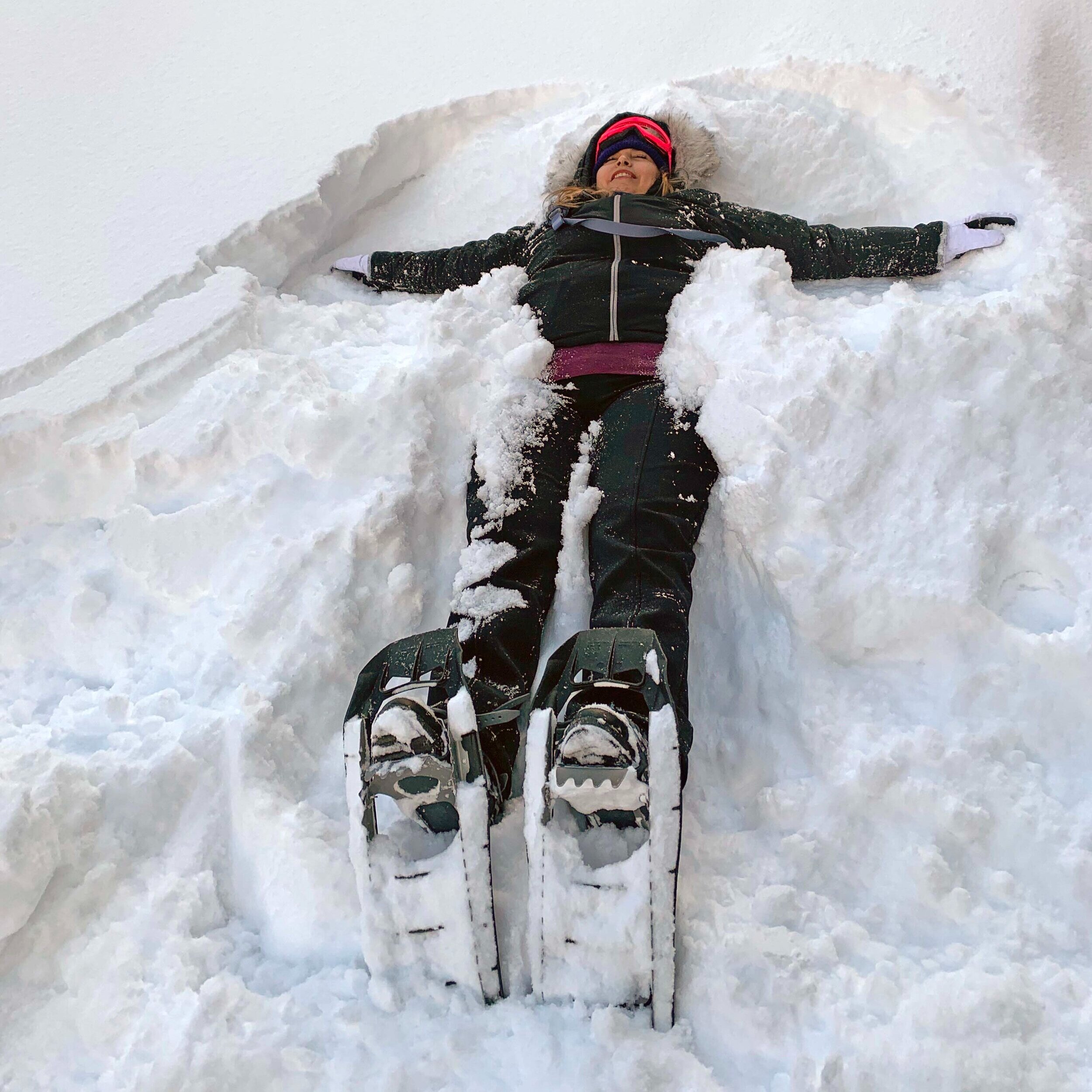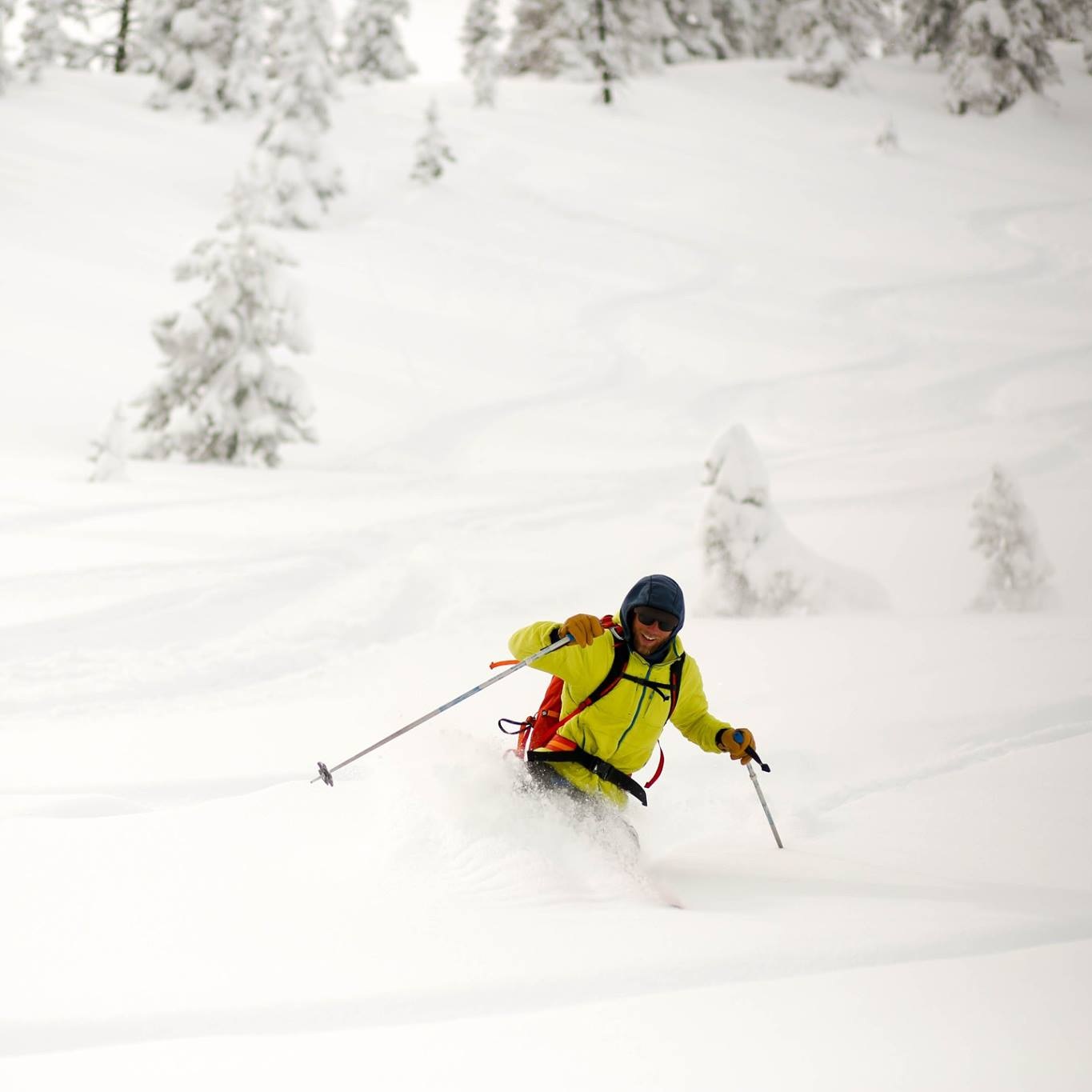If you’ve ever spent a winter in the Colorado mountains, you know how much our state thrives on winter sports! We love skiing, snowboarding, backcountry touring, and cross-country skiing – but these aren’t the only ways to experience the same snow, scenery, and fresh air. If hiking and walking through a winter wonderland appeals to you, snowshoeing might be something to try this season.
What is Snowshoeing?
Snowshoeing is one of the most accessible winter sports to learn, whether you are looking to try something new for yourself or take your children on an adventure. When snowshoeing, you use snowshoes that buckle or strap on to waterproof boots. Snowshoes help distribute your weight across the snow so you don’t sink as deep and can move more easily across the surface. Other parts of the snowshoe help you do things like gain traction on icy terrain and ascend steeper slopes. Snowshoes enable you to go winter hiking both on snow-covered summer trails and explore untouched Colorado terrain by breaking new trail through deep snow.
Fun for the Whole Family
Like hiking, snowshoeing can vary in difficulty based on the length and elevation gain of your route. It’s a great sport to enjoy with the whole family because you can choose to take a wintry stroll through the pines for less than an hour or go on an all-day adventure to an alpine lake. Along the way, the minimal gear to manage allows you the space for more conversation, laughter, snow angels, and snowball fights. We often find that slowing down on snowshoes enables us to soak in more of the beauty around us!
However, snowshoeing is not a sport to be underestimated. There are snowshoe runners and snowshoe racers, like the Snowshoe Championships held in Leadville, Colorado last year! Even when moving slowly, snowshoers can work hard to break trail, travel uphill, and get some solid exercise. The beauty of snowshoeing is that with just a pair of snowshoes, you can find an adventure that’s just your speed.
Snowshoeing is Affordable & Accessible
Compared to many other winter sports, snowshoeing is relatively affordable and easy to enjoy on your own. Sports like skiing and snowboarding require a myriad of expensive gear, practiced skills, and technical terrain; these things can be challenging to come by, especially for the whole growing family! Since snowshoeing is essentially hiking in the snow, all you need are snowshoes, warm waterproof boots, and basic hiking essentials, including a sense of where to go. In addition, snowshoes are adjustable and strap on to your snow boots, and so within a certain range, snowshoes will grow with your child and can be shared between family members and friends.
Guided Backcountry Snowshoe Tours
Like any sport, snowshoeing comes with its own gear and skills for having the best experience in the snow! A guide can teach you how and when to utilize the different parts of the snowshoe and how to adjust the snowshoe for maximum comfort and traction. In addition, a guide offers valuable expertise on snow conditions and what local areas to enjoy or avoid. By managing safety concerns such as avalanche terrain, trail difficulty, and weather conditions, going with a guide brings peace of mind so that you can focus on enjoying time outside with your friends and family.
From Leadville to Salida, the Upper Arkansas River Valley is filled with amazing snowshoe trails. Buena Vista Mountain Adventure snowshoe guides would love to introduce you to some of our favorite spots. So if you’re interested in one of our guided snowshoe tours, please visitwww.bvmountainadventures.com/snowshoeing to learn more.











